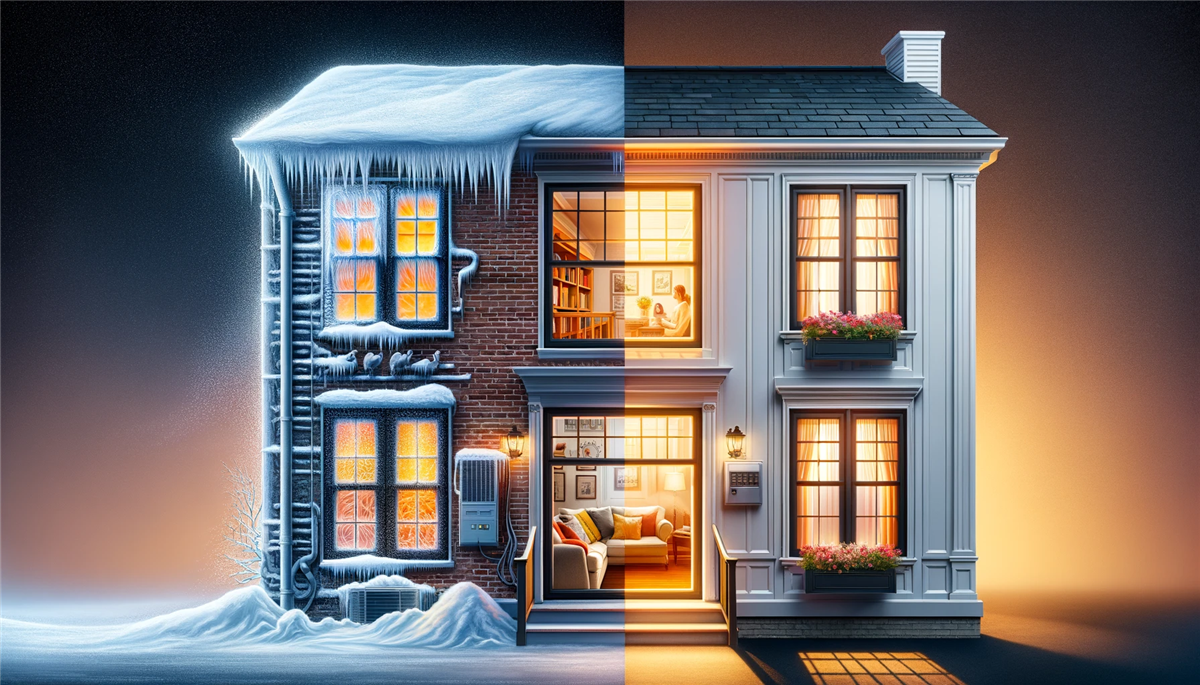
Quick Guide to Boosting Old Window Efficiency
– Seal Air Leaks: Use caulking and weather stripping to address drafts.
– Upgrade Insulation: Consider installing window inserts or using thermal curtains to improve insulation without total replacement.
– Enhance Window Coverings: Switch to energy-efficient coverings like cellular shades for better control of heat loss and gain.
– Implement Exterior Window Treatments: Exterior shades and awnings can help reduce thermal load from the sun.
– Increase R-Value: Look into options like insulating window panels or interior storm windows to enhance your windows’ ability to retain heat.
Windows are often referred to as the eyes of the home, letting in light and offering views to the world outside. But for many homes, especially older ones, windows can become more of a liability than an asset when it comes to energy efficiency. Drafty frames, single-pane glass, and poor insulation can lead to high heating costs and discomfort during extreme temperatures.
Yet, replacing windows can be a costly and daunting project that many homeowners are not ready to undertake. The good news is, there are several steps you can take to significantly improve the energy efficiency of your old windows, without the need for a total overhaul. Whether you’re dealing with drafts, condensation, or just want to reduce your energy bills, making a few smart updates can extend the life of your windows and improve your home’s overall comfort.
We’ll guide you through practical and cost-effective methods to enhance the energy efficiency of your old windows, ensuring warmth in the winter and coolness in the summer, all while keeping your costs down and making your home more sustainable. Let’s dive in to explore how caulking, weather stripping, and other simple upgrades can make a big difference.
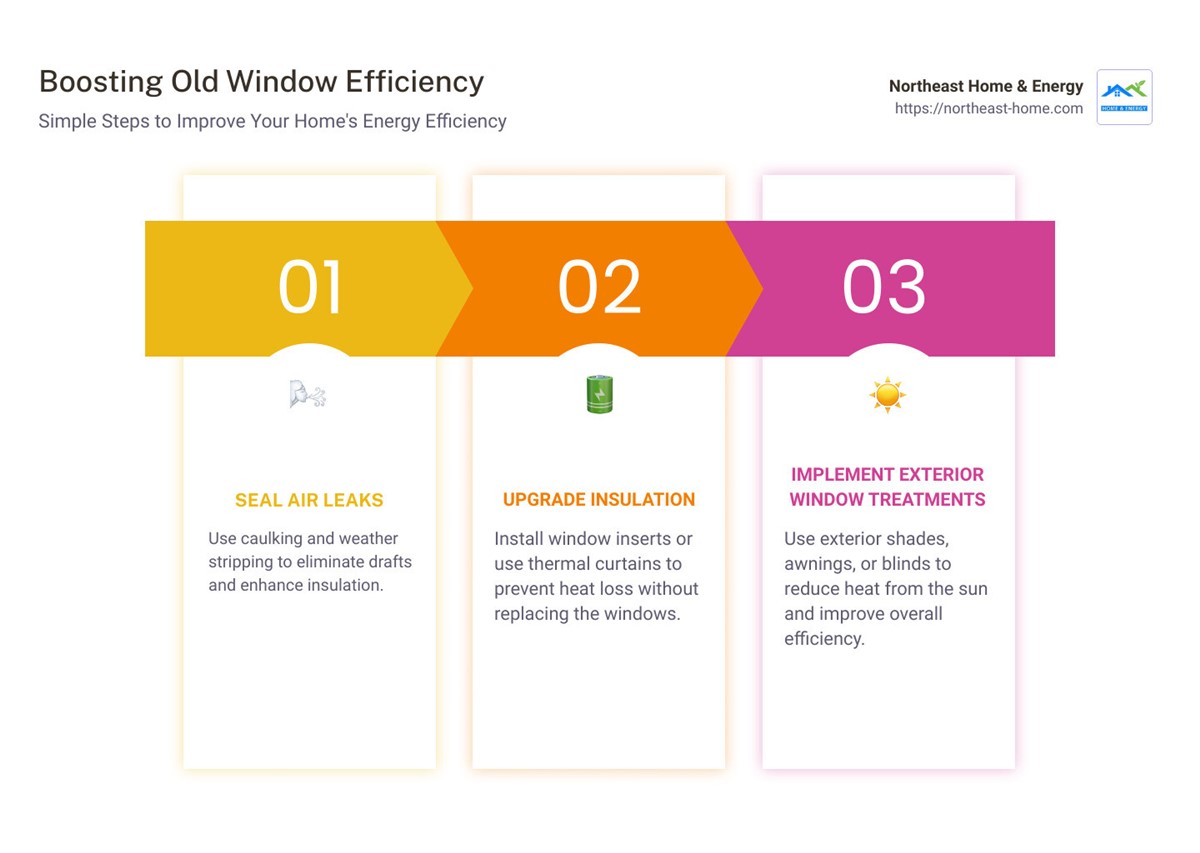
Identify and Seal Air Leaks
One of the first and most effective steps in making old windows more energy efficient is to identify and seal any air leaks. Air leaks can significantly increase your heating and cooling costs by allowing warm or cool air to escape your home. This can make your HVAC system work harder, leading to higher energy bills. Let’s break down the process into simple, actionable steps.
Caulking
Caulking is a simple yet powerful method to seal leaks around your window frames. Over time, old caulk can crack, peel, or deteriorate, creating gaps where air can pass through. Here’s how to do it:
This simple process can significantly reduce air leaks, making your home more comfortable and energy-efficient.
Weatherstripping
Weatherstripping is another effective way to combat air leaks, especially around movable components of windows like sashes. It involves applying a strip of material around the window to fill gaps. Here’s how to apply weatherstripping:
Weatherstripping materials vary, including foam, rubber, and silicone. Choose one that best suits your window type and your climate.
Finding Air Leaks
Sometimes, air leaks are not immediately visible. Here’s a simple method to find them:
Sealing these leaks is a critical step in improving the energy efficiency of your windows. It’s a low-cost solution that can have a significant impact on reducing your energy bills.
By following these steps, you can effectively seal air leaks around your windows. This not only makes your home more comfortable but also contributes to a more energy-efficient living space. These are simple DIY projects that can make a big difference in how to make old windows more energy efficient.
Upgrade Window Insulation Without Replacement
Improving the energy efficiency of old windows doesn’t always mean you have to replace them. There are several budget-friendly ways to upgrade your window insulation and keep your home cozy without the need for a full window replacement. Let’s explore some effective methods:
Window Inserts
Window inserts are a fantastic option for enhancing the insulation of existing windows. They are essentially a secondary pane of glass or acrylic that you install inside your existing window frame. This creates an air pocket between the insert and the original window, significantly improving insulation and reducing heat transfer. They’re relatively easy to install and can be a cost-effective alternative to full window replacements.
Bubble Wrap
It might sound unconventional, but bubble wrap is a surprisingly effective insulator. Simply spray a bit of water on your window glass and apply bubble wrap with the bubble side facing the glass. This creates an air pocket that helps to insulate your windows during the colder months. It’s a temporary solution but can be quite effective—and it’s very budget-friendly.
Traditional Caulk
Over time, the caulk around windows can crack and deteriorate, leading to drafts and energy loss. Applying new caulk around your windows is a simple and inexpensive way to seal these leaks. Make sure to remove any old, peeling caulk before applying the new layer for the best results.
Insulated Glass Units (IGUs)
If your window frames are still in good shape, replacing the existing glass with insulated glass units can be a great way to improve energy efficiency. IGUs have two or more glass panes with a vacuum or gas-filled space in between, significantly reducing heat transfer. This option can be more expensive than others but is still less costly than a full window replacement.
Thermal Curtains
Thermal curtains are designed to provide an extra layer of insulation. They work by trapping air between the window and the curtain, which helps to keep your home warmer in the winter and cooler in the summer. Thermal curtains are an easy and decorative way to improve your windows’ energy efficiency.
Draft Stoppers
Draft stoppers, also known as draft snakes, can be placed at the bottom of windows to prevent cold air from entering and warm air from escaping. They are usually made of fabric and filled with insulating materials. Draft stoppers are particularly useful for older windows where the gap at the bottom is a significant source of drafts.
By implementing these solutions, you can significantly improve the energy efficiency of your old windows without the need for a costly replacement. Each of these methods can be a standalone solution or used in combination with others for even better results. Taking steps to improve your windows’ insulation not only makes your home more comfortable but also contributes to lower energy bills and a smaller carbon footprint.
- Inspect your windows carefully to identify any old, cracked, or missing caulk.
- Remove the old caulk with a putty knife or caulk remover tool.
- Clean the area thoroughly to remove any dust or debris.
- Apply a new bead of caulk around the window frame, ensuring a smooth, continuous line.
- Smooth the caulk with a wet finger or caulk tool for a clean finish.
- Measure the perimeter of your window sash or the area you need to seal.
- Cut the weatherstripping to size, leaving a little extra length for adjustments.
- Clean the surface where the weatherstripping will be applied.
- Peel and stick the weatherstripping in place, pressing firmly to ensure a good seal.
- Close all doors, windows, and vents in your home.
- Turn on all exhaust fans to create negative pressure inside.
- Light an incense stick and hold it near the window seams.
- Watch the smoke. If it wavers or is sucked out or blown into the room, there’s a leak.

Following these tips will help you upgrade your window insulation, leading seamlessly into our next section on enhancing window coverings for improved efficiency.
Enhance Window Coverings for Improved Efficiency
When we talk about how to make old windows more energy efficient, a lot of focus goes to the glass and frames. But, there’s another player in the game that’s often overlooked: window coverings. Yes, the right window coverings can significantly boost your windows’ efficiency. Let’s dive into some options.
Energy-Efficient Window Coverings
Not all window coverings are created equal when it comes to energy efficiency. Some are designed specifically to improve your home’s insulation and reduce energy consumption. These coverings work by trapping air and creating a barrier between the window and your home’s interior, helping to maintain a consistent temperature.
Thermal Curtains
Thermal curtains are a fantastic choice for those looking to keep the heat in during winter and out during summer. They’re made with multiple layers of fabric, including a dense, insulating layer that significantly reduces heat transfer. According to the Department of Energy, installing thermal curtains can reduce heat loss by up to 25%. That’s a considerable saving on your heating bill!
Roman Shades
Roman shades are not only stylish but can also be made with insulating materials. When pulled down, they lay flat against the window, providing an effective barrier against heat loss. For the best results, opt for shades with a thermal lining.
Cellular Shades
Cellular shades, also known as honeycomb shades, are among the most efficient window coverings available. Their unique design creates pockets of air that insulate windows from heat and cold. A study by the U.S. Department of Energy found that cellular shades can cut heat loss through windows by up to 40% in the winter and reduce solar heat through windows by up to 60% in the summer.
In Summary:
Choosing the right window coverings can make a significant difference in how energy-efficient your old windows are. Not only will these options help keep your home more comfortable, but they’ll also contribute to lower energy bills. It’s a win-win situation.
With these insights, you’re well-equipped to make informed decisions about enhancing your window coverings for improved efficiency. Every little bit helps when it comes to energy conservation and making your home more eco-friendly.
Utilize Exterior Window Treatments
When we talk about how to make old windows more energy efficient, we often focus on what we can do inside. But, don’t forget the outside! Exterior window treatments like awnings, blinds, overhangs, and shutters not only add character to your home but also boost its energy efficiency. Let’s break it down:
Exterior Shading
Trees and large bushes can be natural allies against the sun’s heat. Planting them strategically around your home can block direct sunlight, keeping your rooms cooler. It’s a long-term strategy but well worth the effort.
Awnings
Awnings are like hats for your windows. They block the sun’s rays before they hit your glass, reducing heat gain inside your home. According to research, awnings can reduce solar heat gain by up to 65% on south-facing windows and 77% on west-facing ones. That’s a significant drop, making your living space more comfortable during hot summer months.
Exterior Blinds
Think of these as sunglasses for your windows. Exterior blinds can be rolled down when the sun is at its peak, blocking heat and glare. When not needed, simply roll them up and enjoy your view. They’re especially useful in areas with intense sun exposure.
Overhangs
Overhangs work similarly to awnings but are a permanent architectural feature. They’re designed to block summer sun while allowing winter sun to warm your home, thanks to the sun’s lower position in the sky during colder months. It’s a smart design choice if you’re renovating or building a new home.
Exterior Shutters
Shutters add charm and also protect your windows from heat. When closed during the hottest part of the day, they act as a barrier against heat, reducing your indoor temperature. Plus, they’re excellent for privacy and security.
Why bother with exterior treatments? Well, they tackle the heat before it even reaches your windows, making your efforts to insulate from the inside even more effective. It’s about creating a comprehensive shield around your home to keep the heat out and cool in.
Remember that making your old windows more energy efficient isn’t just about one big change. It’s about combining efforts, both inside and out, to create a comfortable, energy-efficient home. Next, we’ll dive into how increasing the R-value of your windows can make a significant difference. Stay tuned for more practical tips and tricks.
Increase the R-Value of Your Windows
Boosting the R-value of your windows is a game-changer when it comes to energy efficiency. R-value measures how well a material insulates. Higher R-values mean better insulation. Here’s how to ramp up your old windows’ R-value without breaking the bank.
Caulking and Weatherstripping
First things first, seal those leaks. Air leaks are the enemy of energy efficiency. Use caulking to seal the cracks and gaps around your window frames. This is a simple, low-cost fix that can have a big impact. For the moving parts of windows, apply weatherstripping. It blocks air leaks while allowing you to open and close the windows. Together, caulking and weatherstripping are the dynamic duo of basic window insulation.
Insulating Window Panels
Consider installing insulating window panels. These panels add an extra layer of insulation, significantly increasing your windows’ R-value. They are easy to install and remove, making them a flexible option for different seasons.
Interior Storm Windows
Interior storm windows are another effective way to boost insulation. They fit inside your existing windows, adding another layer of air insulation. This can dramatically reduce heat loss through your windows, improving your home’s overall energy efficiency.
Window Films
Window films are thin layers of material you can apply directly to your glass panes. They come in two main types: insulating films and solar control films.
Both types of films can reduce your energy bills by improving your windows’ ability to maintain a comfortable indoor temperature.
Solar Control Film
Expanding on solar control films, these are a must-have for anyone living in areas that get a lot of sun. They not only increase the R-value by reducing heat gain but also protect against UV rays. This can prevent your furniture and carpets from fading.
In summary, making your old windows more energy efficient isn’t about a complete overhaul. It’s about smart, strategic upgrades. By focusing on caulking and weatherstripping, adding insulating window panels or interior storm windows, and choosing the right window films, you can significantly increase the R-value of your windows. This leads to a more comfortable home and lower energy bills. With these steps, you’re well on your way to enhancing the energy efficiency of your old windows.
Next, we’ll address some frequently asked questions about improving old window efficiency. Stay tuned for insights that could help you make informed decisions about your home’s energy efficiency.
Frequently Asked Questions about Old Window Efficiency
In our journey to make homes more energy-efficient, many homeowners ask about improving the efficiency of their old windows. Here, we tackle some of the most common queries.
Can old windows be made more energy efficient?
Yes, absolutely. Old windows can significantly benefit from a few upgrades to enhance their energy efficiency. Techniques such as adding weather stripping, using caulking to seal air leaks, and installing window inserts or storm windows can make a notable difference without the need for complete replacement.
How do you insulate old windows without replacing them?
Insulating old windows without replacing them involves a few strategic steps:
How can I improve the efficiency of my old windows?
Improving the efficiency of old windows can be achieved through several methods:
By implementing these strategies, you can enhance the energy efficiency of your old windows, contribute to a more comfortable home environment, and enjoy lower energy bills. Every step towards improving window efficiency not only adds to your home’s comfort but also to its overall energy conservation efforts.
Conclusion
At Northeast Home & Energy, we understand the importance of making your old windows more energy efficient. It’s not just about saving money on energy bills—it’s about creating a more comfortable, sustainable home for you and your family. Our journey through the various ways to boost old window efficiency highlights the significance of taking action, even with small steps.
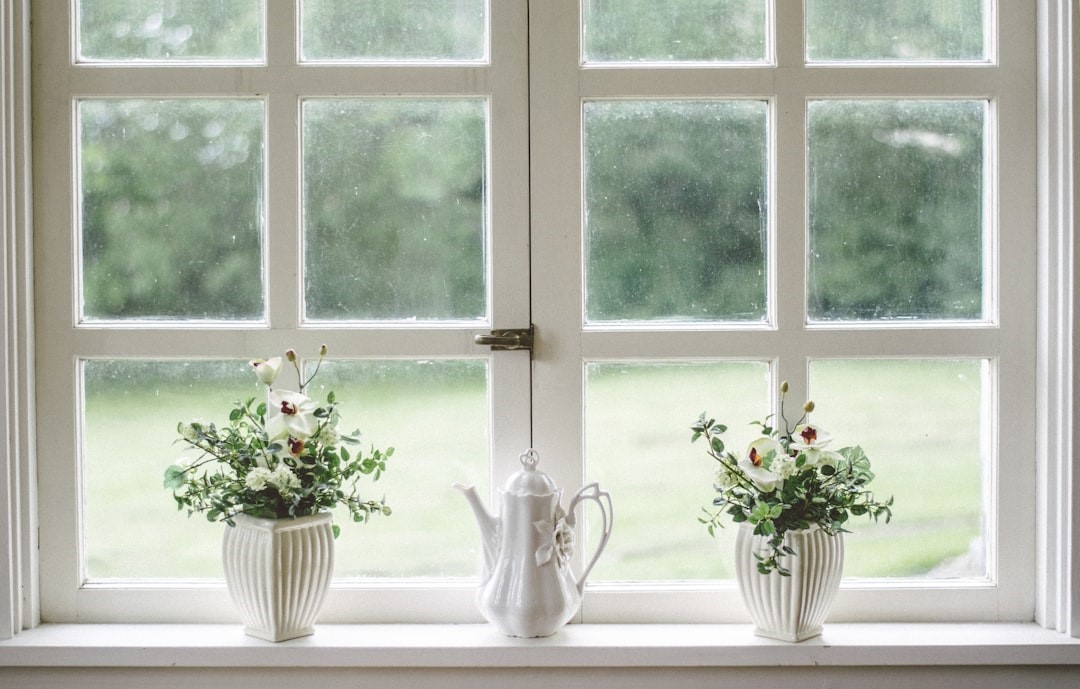
Whether it’s through sealing air leaks, upgrading window insulation, enhancing window coverings, utilizing exterior window treatments, or increasing the R-value of your windows, each method contributes significantly to the overall energy efficiency of your home. We’ve seen how these improvements can transform the comfort and sustainability of a living space.
How to make old windows more energy efficient isn’t just a task; it’s an investment in your home’s future. By prioritizing these upgrades, you’re not only reducing your carbon footprint but also enhancing the value and appeal of your property.
For those who are ready to take the next step towards more energy-efficient windows, we’re here to help. Our team at Northeast Home & Energy has the expertise and experience to guide you through the process, ensuring that your window improvements are done right. From initial consultation to final installation, we’re committed to providing quality service and sustainable solutions.
Don’t let old, inefficient windows compromise your home’s comfort and energy efficiency. Explore our replacement windows and doors installation services and discover how we can help transform your home into a more energy-efficient, comfortable living space. Together, we can make a significant impact on your energy bills and the environment.
Thank you for joining us on this journey towards better window efficiency. At Northeast Home & Energy, we’re not just improving windows; we’re building better, greener homes for the future.
- Energy-Efficient Window Coverings: These are designed to improve your home’s insulation and reduce energy consumption.
- Thermal Curtains: Can reduce heat loss by up to 25%, making them a great choice for energy savings.
- Roman Shades: When made with insulating materials, they provide an effective barrier against heat loss.
- Cellular Shades: Known for their efficiency, they can cut heat loss in winter by up to 40% and reduce solar heat in summer by up to 60%.
- Insulating films help retain heat during winter, making them ideal for colder climates.
- Solar control films reflect sunlight and heat, keeping your home cooler in summer. This is especially useful in hot, sunny environments.
- Seal Air Leaks: Use caulking and weather stripping to seal any gaps around the window frame, where air might be leaking in or out. This is a simple, cost-effective first step.
- Use Window Insulation Kits: Plastic film insulation kits are available at most hardware stores. They’re applied directly to the inside of the window frame with double-sided tape and then heated with a hair dryer to shrink-fit the film and remove wrinkles, creating an insulating air pocket.
- Install Window Inserts: These are essentially interior storm windows that can be easily installed and removed. They provide an additional layer of insulation and can significantly reduce heat transfer.
- Apply Thermal Curtains: Heavy-duty curtains or drapes can also help insulate your windows by providing an additional barrier to heat loss.
- Add Caulking and Weather Stripping: This is the first line of defense against air leaks. Ensure all seams and gaps are properly sealed.
- Install Storm Windows or Window Inserts: These can dramatically improve insulation and are less expensive than full window replacements.
- Upgrade Window Coverings: Use thermal curtains or cellular shades to provide extra insulation and control heat transfer through the windows.
- Utilize Exterior Window Treatments: Installing awnings, overhangs, or exterior shutters can block direct sunlight, reducing heat gain in the summer.
- Apply Window Films or Solar Control Film: These films can reflect heat and UV rays, keeping your home cooler in the summer and warmer in the winter.
Subscribe to Northeast Home & Energy's Blog



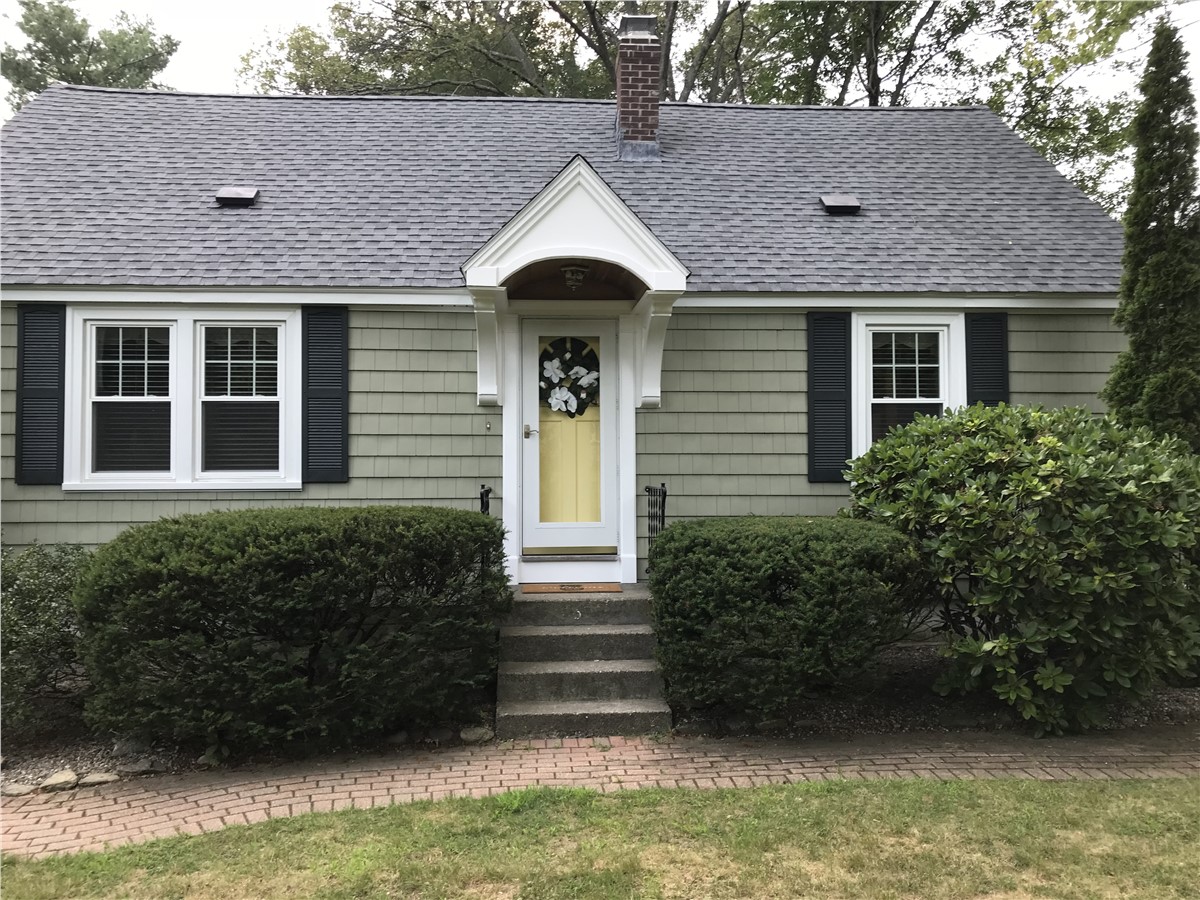
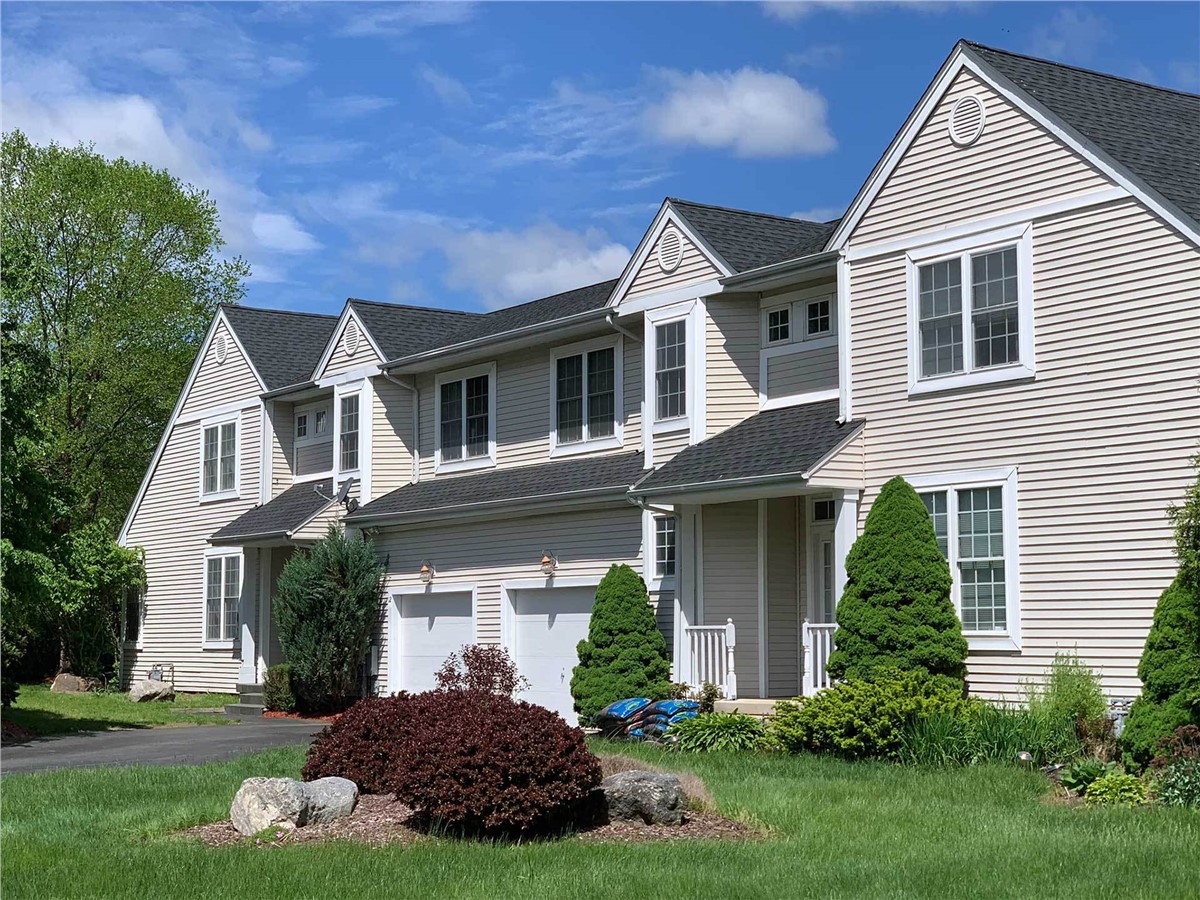
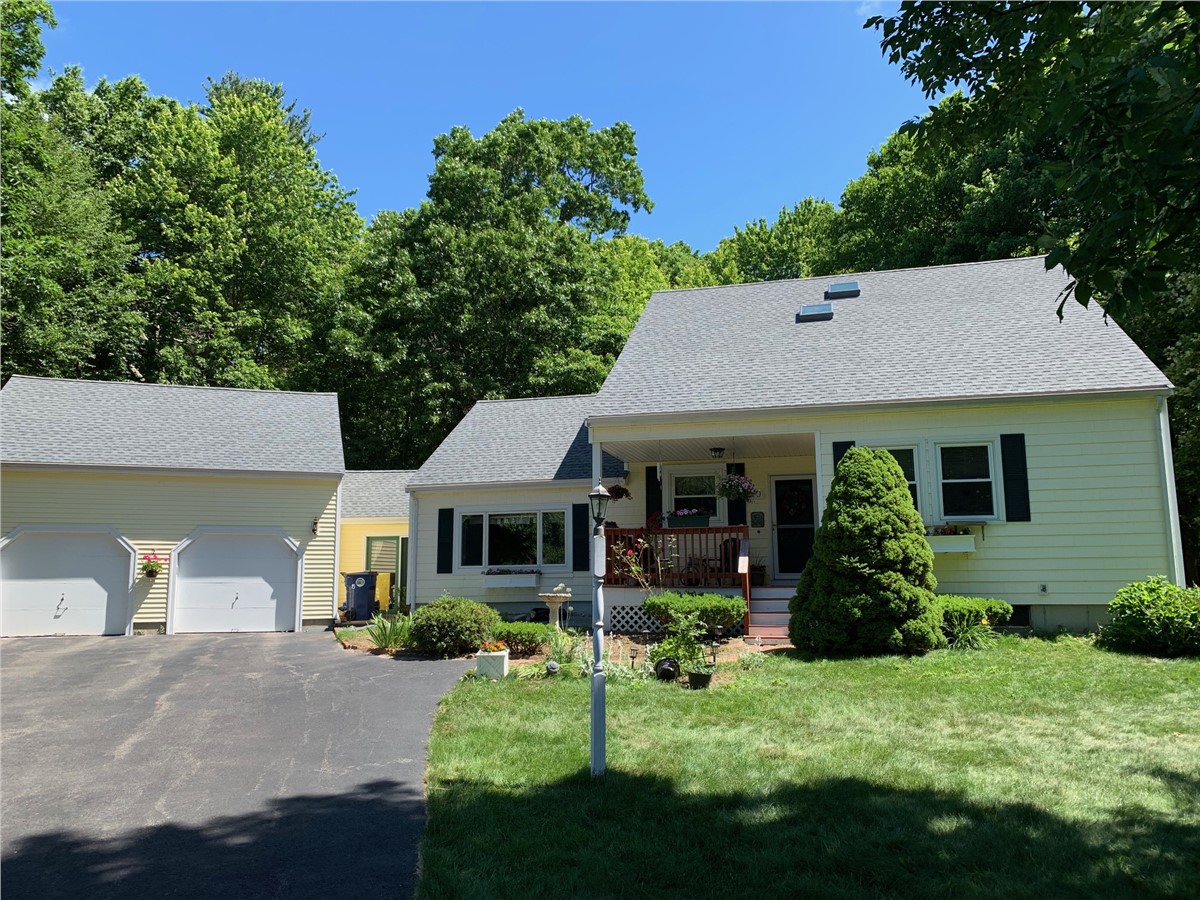

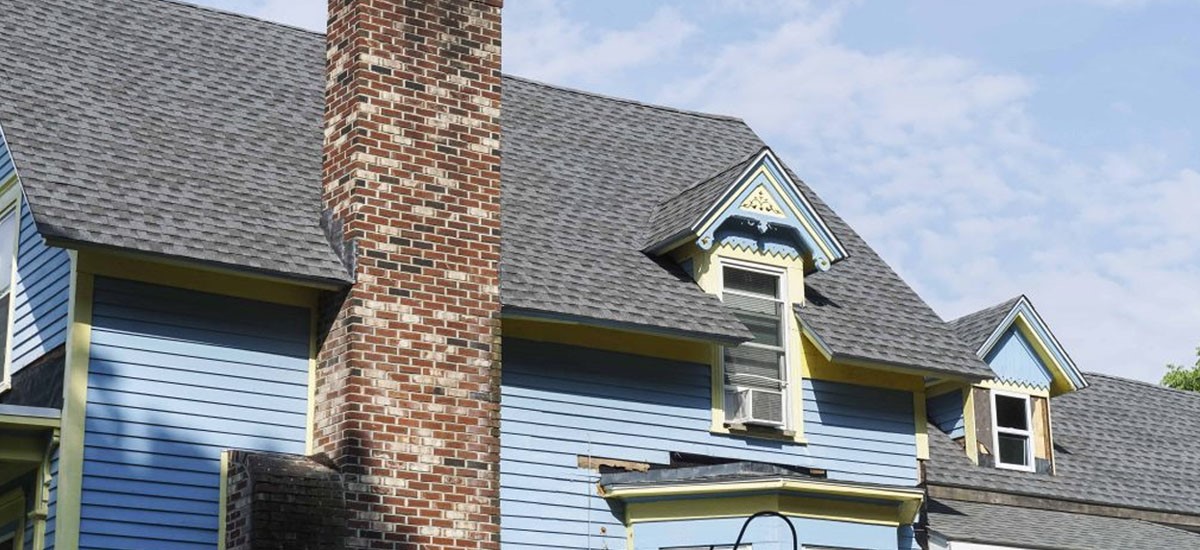

Comments